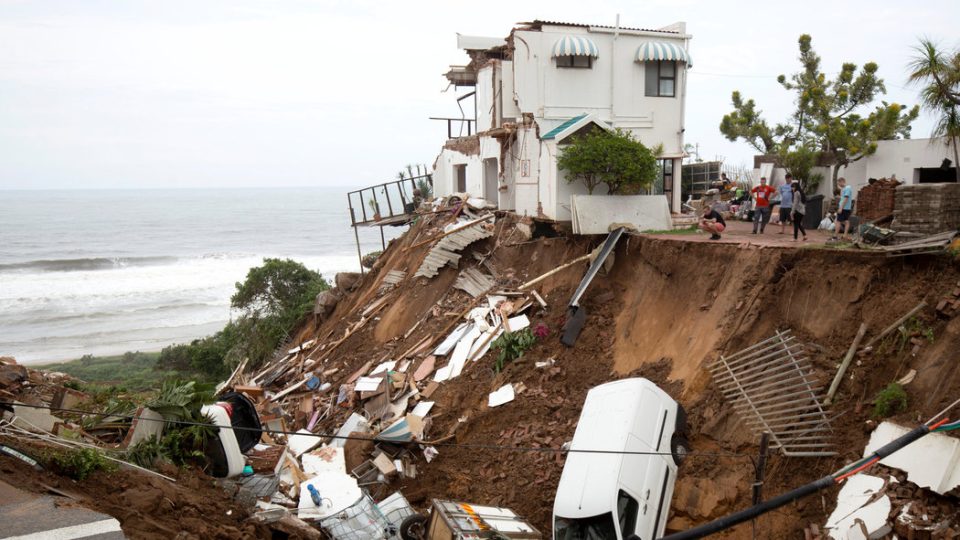COOPERATIVE Governance and Traditional Affairs (Cogta) Minister Nkosazana Dlamini-Zuma says the declaration of the National State of Disaster, due to the deadly floods in KwaZulu-Natal and parts of the Eastern Cape, was likely to last for up to three months with the possibility of government extending the legislation.
Dlamini-Zuma on Tuesday briefed the media virtually following President Cyril Ramaphosa’s address on Monday evening, on the devastating floods that have wreaked havoc in KZN and the Eastern Cape.
At least 443 people have died in KZN and approximately 48 people were still missing or unaccounted for.
Nearly 4,000 homes were completely destroyed and more than 40,000 people were displaced by floods.
According to Dlamini-Zuma, government is permitted by law to declare a National State of Disaster for a period of three months.
But due to the extensive damage to public infrastructure – including schools, health facilities, police stations and courts – the Disaster Management Act was likely to be extended to deal with the devastating floods.
“The Disaster Management Act allows up to three months and if it needs to be terminated early, it can be terminated early. But it still allows for an extension if there is still a need for it.
“So, the initial period will be three months, and then an assessment will be made whether it’s extended or not,” Dlamini-Zuma said.
Dlamini-Zuma added that the assessment of damaged infrastructure, which is estimated to run into billions of rand, was yet to be concluded.
“The province of KZN has made some estimates, but I do not want to pronounce on those estimates right now because the engineers, quantity surveyors and all sorts of experts are doing the quantification and the costing.
“The definitive costing will be after that has been done. For now, what is being said is really approximations.”
The Cogta minister, who leads the national intervention on the severe weather events, said the declaration of the state of disaster would enable government to coordinate and integrate its response efforts and rebuilding programmes.
“The declaration of a national disaster strengthens the commitment of national government departments to fulfil its role in providing relief, recovery and rehabilitation to affected communities.
“The declaration signals that government as a whole intends to deal with the impact of the severe weather on KZN and other provinces in an even more holistic manner through an integrated and coordinated approach across the spheres of government and employing the District Development Model.”
With government having terminated the National State of Disaster earlier this month, to deal with the Covid-19 pandemic, Dlamini-Zuma explained how the legislation this time around was different.
“The state of national disaster of Covid was occasioned by a health occurrence, which was the pandemic… this is a national disaster [floods] which cuts across almost every sector.
“For instance, the water, electricity, transport and residential infrastructure, and the humanitarian and search and rescue are different from the pandemic which was a health issue,” she said.
Dlamini-Zuma said the floods left a trail of destruction in KZN, particularly in the eThekwini metro and other districts, due to the heavy rains that plummeted in the province.
She said more than 300mm of rain fell in KZN last week in just 24 hours. This was equivalent to four months’ worth of rainfall.
“This also tells us that climate change is here with us now. Scientists have been telling us that the eastern part of the country is going to be wet and we’ll have frequent floods.
“The western part of the country is going to be dryer, and we’ll have frequent draught. And maybe we thought it’s something that is still in the distant future.”
The National Disaster Management Centre (NDMC) announced that eight task teams were appointed to deal with humanitarian relief efforts and other interventions in the affected provinces.
The head of the NDMC, Dr Mmaphaka Tau, outlined the different task teams and their functions.
“The first task team is called the health and medical services task team that is led by the Department of Health. The second one is the humanitarian relief task team [and] is led by the Department of Social Development.
“The third one is integrated flood risk and early warnings, which is led by the NDMC together with the SA Weather Service.
“The fourth one is the food and nutrition task team, which is led by the Department of Agriculture, Land Reform and Rural Development. The fifth one is the communications and community mobilisation, which is led by the Government Communication and Information System.
“The sixth one is infrastructure interventions, which is led by the Department of Public Works and Infrastructure.
“The seventh one is security and emergency search and rescue, which is led by the SA Police Service. And the eighth one is funding, monitoring and evaluation which is led by National Treasury together with the Department of Planning, Monitoring and Evaluation.”
Tau said disaster operation centres were already established and would ensure the coordination of relief efforts in the affected provinces.
“These teams are being activated as we speak, they will start to function effectively and we’ve come up with a model that will ensure that they’re replicated at the provincial and municipal levels.
Flood victims can contact the NDMC for enquires and assistance on 012 848 4704/012 848 4705 or email Nervecentre@ndmc.gov.za
Image (A house in KZN sunk by devastating floods).

